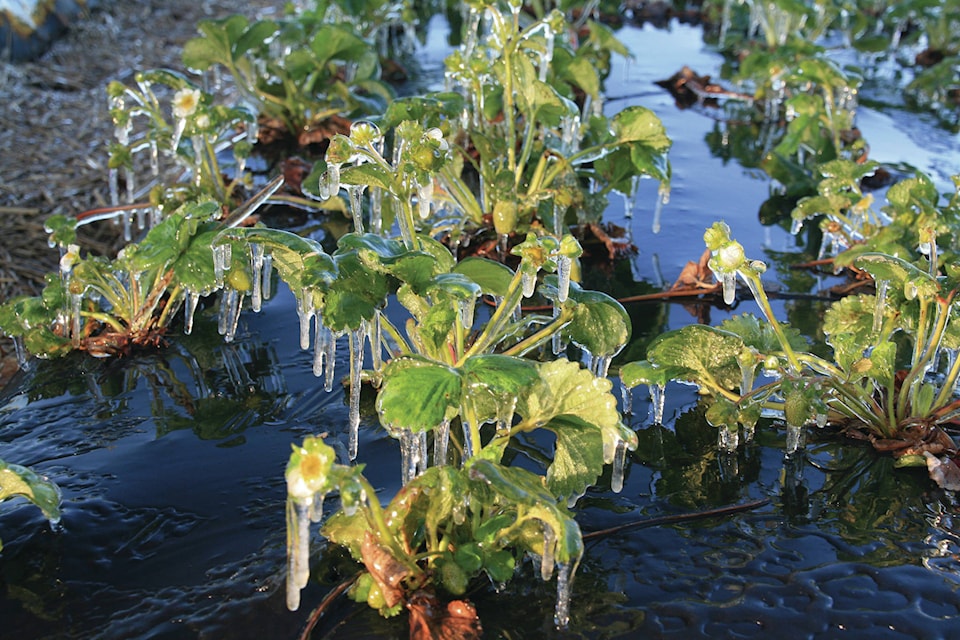An unusual “killer” frost has caused widespread damage to crops in the Maritimes, with everything from Nova Scotian wine grapes to Island asparagus harmed by a sharp plunge in spring temperatures.
Farmers were beginning to assess the toll from the June cold front that hit Monday, as word came from Environment Canada of yet another frost advisory for early Thursday in all of Atlantic Canada.
“It’s the beginning of the year and it’s a bad time for something like this to happen, just as the growing season begins,” Keith Colwell, Nova Scotia’s minister of agriculture, said in a telephone interview Wednesday.
Gerry McConnell, founder of Benjamin Bridge vineyards, said the frost caused significant damage to his wine grapes in the Gaspereau Valley.
“The temperatures across Nova Scotia did drop down to -2 C and in some places -4 C. Those are killer frost temperatures,” he said.
“But it happened in variable ways … Some vineyards were hit much harder than others.”
Curtis Millen, a strawberry and blueberry farmer in Great Village, N.S., has been trying to rescue his crops from a series of cold, wet days that included Monday’s frost.
He has a water system to warm the buds of his strawberries, but which caused the plants to be caked in ice Monday morning. Photographs of plants on the morning the temperatures plummeted show strawberry leaves shining under a coat of ice.
He now needs days of sun to dry out the fields and allow the crops to absorb nutrients.
“We’ve got damage from frost and we have damage also from overhead irrigation trying to keep the frost off and wetting the plants to death,” he said Wednesday as he worked on his roughly 80 hectares of strawberries about 30 kilometres northwest of Truro.
He estimated one-third of his strawberry crop would be damaged, adding that other farmers without the overhead, anti-frost immigration system have incurred much greater losses. His blueberry losses are even more extensive, he said.
Ian Hubbard, a meteorologist at Environment Canada, said record lows were set early Monday. In Kentville, N.S., it dropped to almost -2 C, marking a huge shift from the 28 C high on Friday that had set off a growth spurt in a wide variety of crops before the frost hit.
Mathew Vankoughnett, a researcher with the applied geomatics research group at Nova Scotia Community College, says such a rapid temperature flip is rare.
His research indicates that Greenwood, N.S., in the centre of the Annapolis Valley, only had one similar episode in 1978 when temperatures fell below 0 on June 2.
